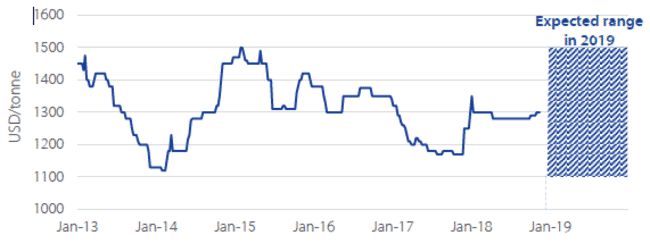The forecast, which forms part of the Dutch bank’s latest Global Animal Protein Outlook, notes that the lack of El Niño and good biomass of Peruvian anchovetta improved global fishmeal supply in 2018, but no further growth in supply is expected.
“As long as climatic conditions allow, we expect a similar level of production in 2019,” the report states.
Peru is the world’s largest supplier of fishmeal. The 3.3 million tonne quota for anchovetta landings during the first fishing season in 2018 was the highest in recent years and 92 percent of this was landed. Following the positive first Peruvian fishing season, fishmeal prices declined. For the second season, fishmeal prices are expected to remain at similar levels.
“Expectations for the second season of 2018 are also good, with quota forecast at 2.2 million tonnes,” the report notes, while – in terms of prices, Rabobank predicts a price range of US$1,100 to $1,500 per tonne.

Alternative ingredients
The report also notes that alternatives to fishmeal and fish oil are also gaining ground, but that these are unlikely to impact fishmeal prices due to their comparatively small scale.
“Fishmeal volatility and limited supply create an opportunity for alternative ingredients to substitute fishmeal in aquafeed formulae. Algal oils, canola/algae hybrids, insect meals, and bacterial proteins have all attracted interest and investment in 2018. Some alternative protein and oil companies started production in 2018, while some aim to achieve commercial-scale production in the next few years. We expect to see further use of alternatives as aquafeed ingredients in 2019 and beyond, but this will remain at trial scale and is unlikely to impact fishmeal prices.”



